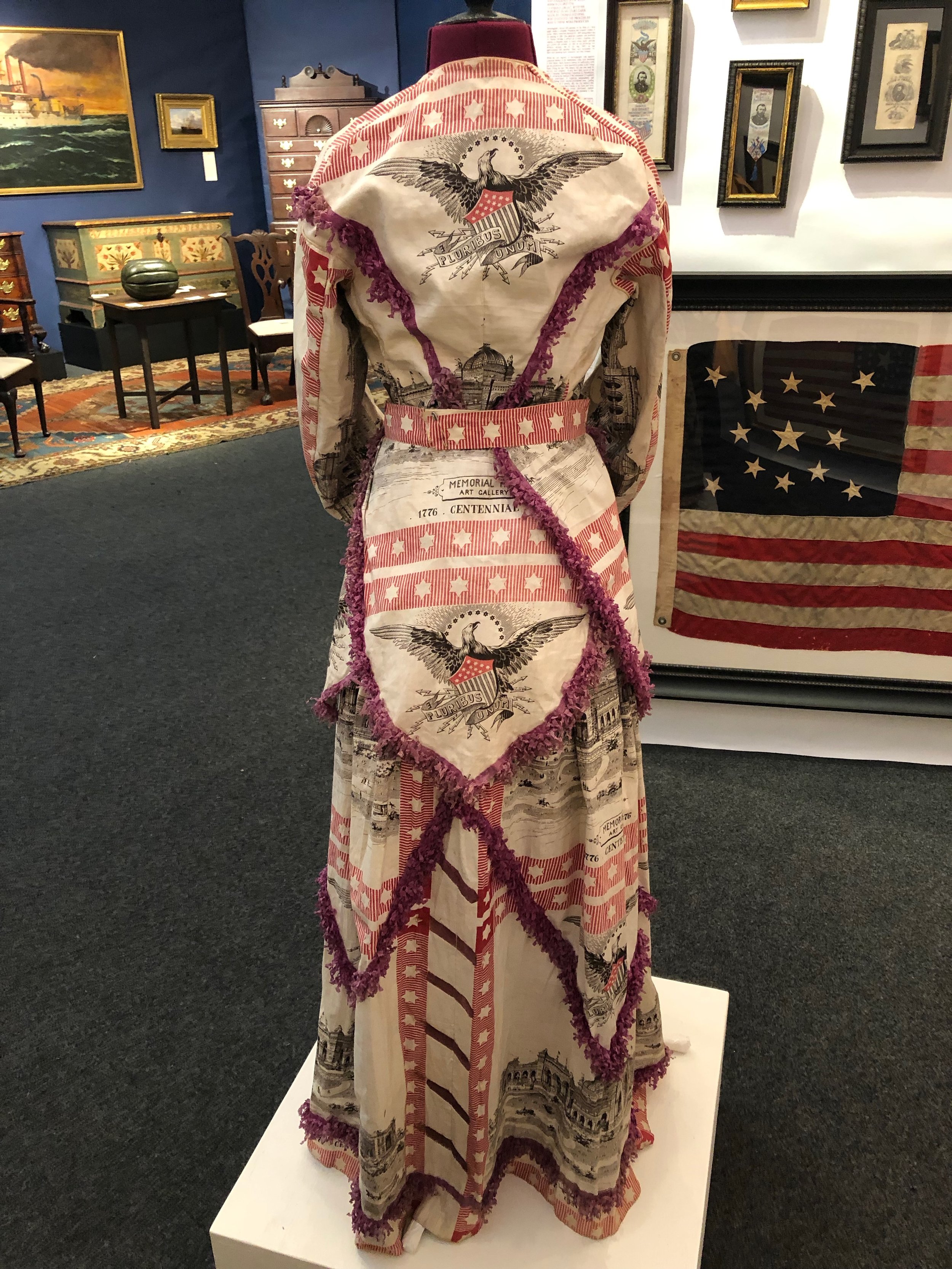This is an “I can’t resist sharing” post.
Today I visited the 2019 Philadelphia Antiques and Art Show. As can be expected, there were much to inspire, admire, and (seriously) covet. But this dress was the only item that made me gasp.
The Centennial International Exhibition of 1876 was also held in Philadelphia, and became a grand opportunity to celebrate the hundredth anniversary of the signing of the Declaration of Independence in that same city. It was also the first official World’s Fair to be held in America. This more serious purpose probably explains the exhibition’s official title: The International Exhibition of Arts, Manufactures and Products of the Soil and Mine.
But for most of the million of visitors who streamed into Philadelphia that year, flag-waving patriotism and proud celebrations of American success and accomplishments were the primary draw. Visitors took home all kinds of souvenirs. While the ubiquitous modern tourist t-shirt was still in the future, large handkerchiefs printed with scenes from the exhibition and patriotic symbols were very popular.
This dress was made from a selection of these handkerchiefs. While the exact purpose of the costume is no longer known - the wearer could have been a “greeter” at the exhibition - there’s no doubting the creative invention of the seamstress. Small in size, the dress was likely made for either a slight woman or an adolescent girl. If it looks a bit lumpy, remember that it’s being shown on a modern mannequin, without an 1870s corset to offer the proper shape.
The red-and-black printed patterns were carefully chosen and aligned for maximum impact, with spread-winged eagles across the back and collarbones in the front. The edges of the handkerchiefs were wittily incorporated into a daggered overskirt and modest bustle that were also stylish for the late 1870s. The exhibition’s most prominent building, Memorial Hall, is featured at the center waist.
The fringe accenting the hems is made from crepe paper in a shade of violet to complement the handkerchief’s red. Again, this mimics the elaborate fringing (often in silk) then in fashion for women’s clothing, but in an economical alternative. It’s likely the dress wasn’t expected to have a long life - perhaps it was made for a specific event or celebration - but the fact that the crepe paper has survived for nearly 150 years is a marvel.
In fact, the entire dress is a marvel of patriotism and national pride, even down to the odd little matching cap. (I wondered if its curious “wings” were somehow supposed to show the influence of an 18thc style woman’s cap.) It is currently for sale through Jeff R. Bridgman American Antiques. I hope she finds an appreciative new home soon!



